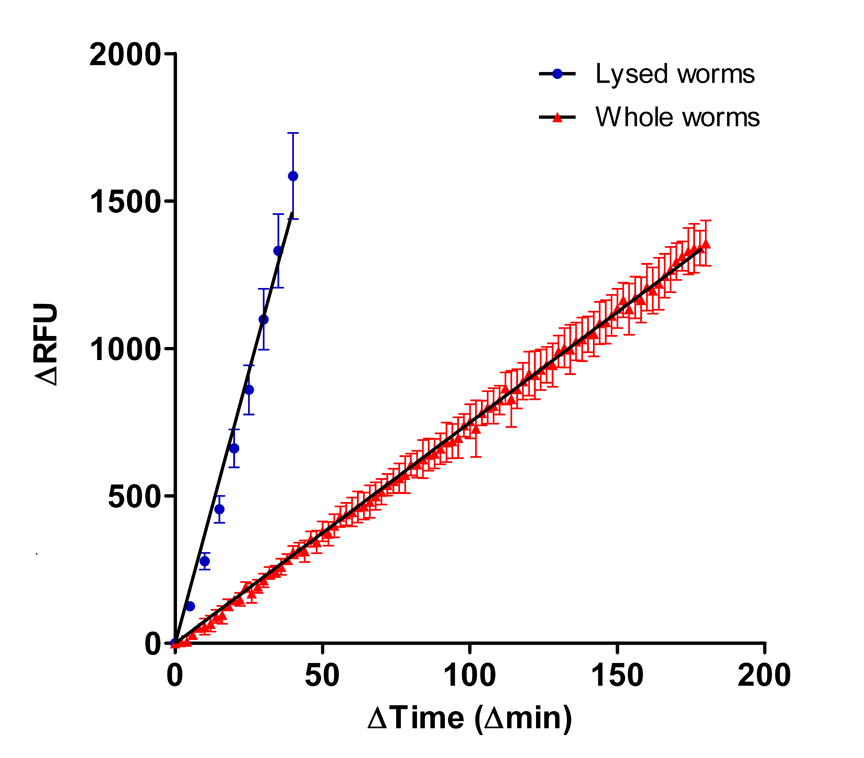Dichlorofluorescin diacetate (DCFDA) is a popular fluorescence-based probe for reactive oxygen species (ROS) detection in vitro and in vivo, and has been used for this purpose in C. elegans. DCFDA is first deacetylated by endogenous esterases to dichlorofluorescein (DCFH), which can react with several ROS to form the fluorophore DCF (reviewed by Halliwell and Gutteridge, 2007). The DCFDA assay in C. elegans is sometimes performed using lysed worms, following high intensity sonication. This process disrupts the outer cuticle and internal membranes, causing intracellular, as well as intraorganelle, contents to be released. Worm lysis will cause the release of transition metal ions such as iron. Free iron may participate in redox cycling to generate ROS, for example, by Fenton chemistry (Halliwell and Gutteridge, 2007). Therefore, apparent ROS levels detected in lysed worms may be un-physiological. However, DCFDA readily diffuses into cells where it undergoes deacetylation, and this allows ROS measurement in whole worms. If whole animals are utilized, cells are not disrupted and iron remains sequestered.
Using DCFDA and a synchronized worm cohort, we measured the amount of ROS in equivalent numbers of lysed and whole worms. The gradient of the linear regression curve (expressed as ΔRFU/Δmin) (Figure 1) is the rate of fluorescent DCF production. This gradient can be, very approximately, converted to the rate of H2O2-equivalent ROS production (nmol/min) by spiking known amounts of H2O2. It should, however, be noted that H2O2 itself does not oxidize DCFH, and hence, the free radical reactions resulting in increased DCF signal following H2O2 spiking are likely complex. Therefore, the calibration ratio can only be considered to provide an approximate estimation of ROS produced. Nevertheless, we found that the rate of H2O2-equivalent production was more than an order of magnitude faster in lysed (4.1x10-3nmol/min/worm) compared to whole animals (3.6x10-4 nmol/min/worm). Using the O2 consumption rate measured in the same worm cohort (0.018 nmol/min/worm), the % of O2 consumed leading to ROS generation can be estimated by dividing the rate of H2O2-equivalent production by the rate of O2 consumption. Using this approach, we found apparent ROS production to be around 23% for lysed worms, but only 2% for whole worms. Current estimates of in vivo mitochondrial ROS production range from 0.2 to 2% (Balaban et al., 2005). Assuming all ROS measured using the DCFDA assay to be of mitochondrial origin, ROS production is clearly overestimated by a factor of at least 10-fold, and may be as much as 100-fold, in lysed worms compared to whole worms. Therefore, when using the DCFDA assay, whole worms should be utilized instead.
Figures
References
Balaban RS, Nemoto S, Finkel T. (2005). Mitochondria, oxidants, and aging. Cell 120, 483-495. 
Halliwell B, Gutteridge JMC. (2007). Free radicals in biology and medicine, 4th ed. (Oxford; New York, Oxford University Press).





